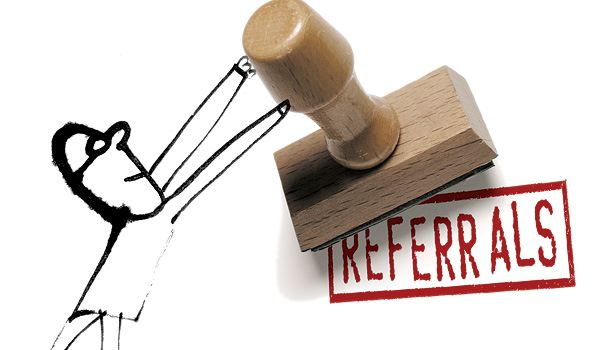I visit a lot of dental offices and I am surprised by how many offices don’t have a formal dental referral program. What makes it even more puzzling is that dental practices, even more so than most businesses, rely more heavily on word-of-mouth (dental referrals) as a main way to build their patient base. So why do they not make it easier for patients, employees and friends to refer them.
A quality dental referral program should be formalized which includes the following elements: (1) Built around the practice goals and objectives, (2) Easy to understand and administer, (3) Incentivized, (4) Written down and trained the staff and patients as to how to use the program, and lastly (5) Tracked, measured and followed through on. Let’s break down each of these components to get a better understanding of their purpose.
(1) Have you ever received a referral that you rather not have been given? Maybe they took up a lot of chair time and never went through with the treatment or they needed treatment you couldn’t help them with. None of us want to look a gift horse in the mouth, but some referrals are not worth it. The way to prevent this is to make sure that you have a clear picture of the type of patient you are looking for that match your practice’s objectives. For instance, if you are just starting out, you may be looking for families. But if you have started to treat minor corrections and carry Invisalign, you may want referrals for invisible braces. Say you want 4 new Invisalign patients each month, this is a great goal. Now what can you do to educate others on what to look for in a dental referral? With your staff, it may be to have them ask patients the simple question, “What do you like or not like about your smile?”
2) Keep the dental referral program simple. If the program is to complex, no one will take the time to complete the paperwork or make a list of names with contact information. Also, it needs to be simple to administer internally. If there are a lot of levels and intricate tracking procedures, it won’t be followed for very long. But, keep in mind, there needs to be some sort of system in place, just not an overly complex one.
3) You need to reward the person sending you referrals to encourage them to send more. The “80/20 Rule” applies here. 80% of your referrals will come from 20% of your staff, patients and friends. This works in two ways. First, the person referring will look for more opportunities to refer your dental practice. And second, they will tell friends, family and co-workers about the incentive you gave them. This prompts others to inquire about you and perhaps become a patient and/or refer you as well. So what should you use to incentivize? Recognition is a key component and nothing works better than a hand written note thanking them for their personal referral. Always make sure it is hand addressed and stamped. Whether you use a $20 Starbucks card or a $50 credit toward future services, your gratitude will be appreciated when included with a sincere note.
4) Nothing will help formalize the process of a dental referral program more than putting it down in writing. The act of putting it down on paper makes it real and more likely to be followed. It forces you and your team to sort out the bugs and streamlines the process. It creates a guideline to be followed and a way for everyone to be held accountable. It also makes it easier to train the staff and get their buy-in, so they realize that this is new part of their job description. It could be nothing more than a simple loose leaf binder with an explanation of the dental referral program with instructions on how to implement the program.
 5) It helps to have some sort of tracking device built into the dental referral program to make it easier to measure its success and incentivize the right parties. How do you do that? Here is an example: It could be as simple as using the back of a business card that says, “The greatest complement you can give us is to refer your family, friends and co-workers. Place you name in the space provided and give to someone you think can use our services (Invisalign, a brighter smile, implants…). If they return this card - you will both receive a discount off future services.”
5) It helps to have some sort of tracking device built into the dental referral program to make it easier to measure its success and incentivize the right parties. How do you do that? Here is an example: It could be as simple as using the back of a business card that says, “The greatest complement you can give us is to refer your family, friends and co-workers. Place you name in the space provided and give to someone you think can use our services (Invisalign, a brighter smile, implants…). If they return this card - you will both receive a discount off future services.”
To make the referral stronger you may want to personalize the program by using testimonials and incentives that each person would find more valuable, such as tickets to a favorite play or a gift certificate to a favorite restaurant or store.
Download the attached "Note Card Dental Referral program" to help you build a rock-star dental referral program:




